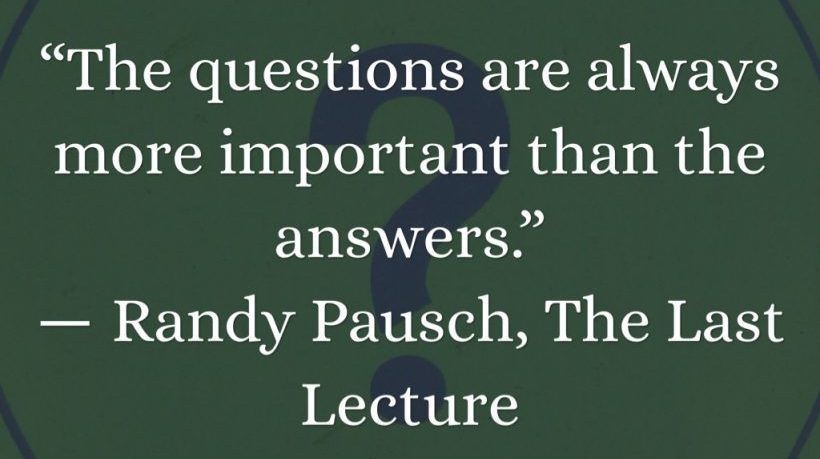The Changing World Of Workplace Learning: How Learning And Development Can Help
We are in an era where we will often not have any answer or solution. However, if we can ask the right questions, we will be on the right path.
With automation, AI, and robots looming over the job scene, there seems to be a constant fear of humans losing out to computers and technology. The digital disruptors in the shape of robots, Big Data, and sensors are here. We are in the midst of the five shifts as described by Dr. Lynda Gratton in her book, The Shift: The Future of Work is Already Here. Let’s face it, these shifts will only deepen and their interconnected effect will become stronger day by day. The known world of fixed and time-bound workplaces has given way to location agnostic and flexible working hours. Lifetime employment is passé. This is the world of freelancers, consultants, project teams – the free agent nation that Daniel Pink wrote about more than a decade ago is here to stay. Hierarchical, command, and control organizations are becoming defunct giving way to more agile and decentralized networks of empowered teams. Organizational designs are being completely reimagined – whether it is Holacracy, Wirearchy, Flatarchy, or what you will. The only way to survive and thrive in this roller coaster world is to ride the change, embrace each and every opportunity to learn and adapt, and collaborate.
What does this mean for workplace learning?
Let’s take a step back and imagine workplace learning of yore. The Learning and Development/Training department spoke to various business stakeholders, identified skill-gaps, did some further needs analysis, and designed learning programs to be disseminated online or in the classroom. The employees were nominated or volunteered for the programs, and often received a certificate upon completion. They then went back to their work expecting to apply what they had learned. This kind of training –while yet not completely obsolete– is rapidly becoming so. It is essentially past focused looking at certain best practices and codified norms and designing programs around them. They worked fabulously in a stable world characterized by predictable and process-driven work, known issues, and repeatable knowledge base. What happens when predictability is replaced by volatility, stability with ambiguity, simple processes with emergent complexity, and known solutions with uncertain trials? We enter the VUCA world and top-down, past focused training programs do not serve our purpose anymore.
While humans are built to adapt and change (we wouldn’t have survived as a species otherwise), the current technology disruptions and other associated changes are outpacing the capacity of individuals and organizations to evolve and adapt. This is causing deep cognitive and skill imbalances in the system. It is fast becoming apparent that not only will technology and automation render many jobs –especially the highly process-driven ones– irrelevant, but will also create many new jobs, some of which lie beyond our imagination today. However, the emergent skills required for this new world is sorely lacking and institutions of higher education are pretty clueless about how to equip the current and coming generations for this evolving world.
Therefore, workplace learning is increasingly going to play a very critical role in the survival of organizations. The war for talent will continue with high-demand skills in areas like robotics, biotechnology, machine learning, artificial intelligence, design thinking, and such being in constant short supply. This conflict will force organizations to re-imagine their current workplace learning practices to focus on building skills in-house, to reskill and upskill their existing talent base to remain relevant, and also to make continuous learning a fundamental part of the organization’s DNA. This also means a deep understanding of the shifts and trends in one’s industry and the world at large. It’s also time to recognize that there is no time to “design a course” for every skill-gap in the world. We have to tap into the collective wisdom of the crowd (employees) and enable them to become facilitators of their own learning. The rest of the article explores how Learning and Development can partner with business to prepare organizations to meet the disruptions with equanimity and success.
- Build communities.
“Collaboration” is fast becoming another buzzword and losing its impact. The truth is that there has never been a greater need for collaboration. Complexity and constant emergence, exceptions, and novel challenges mean that individual workers will not be able to solve problems. An individual can be efficient; but innovation calls for collaboration, conversation, and cognitive diversity. Inclusive and diverse communities of talented and passionate individuals can do what computers and robots cannot. Communities foster collaboration and cooperation, exchange of diverse perspectives and creation of entirely new knowledge. One of the core asks from Learning and Development today will be to act as community builders, facilitators, and enterprise connectors. This necessitates a shift from creating content to curating content, from designing courses to enabling collaboration, from conducting training needs analysis to sense-making across different context and bringing it all together. A successful organization today will be an amalgamation of different communities - some of these will be transient forming around projects consisting of multi-disciplinary and cross-functional members. Other communities will be more permanent in nature forming around domains and practices to strengthen thought-leadership and innovation in key areas. Learning and Development's role will be to enable these communities to form, to function effectively and provide sustained value to the members and to the organization. - Foster meta-learning skills.
Individuals who wish to grow and add value to themselves and to their work need to develop a different set of skills from what worked in the past. The past was driven by fixed knowledge bases, set ways of doing certain things, and a focus on increasing efficiency through task repetition, process improvement, and time management. The future will be driven by learning agility, effectiveness, and process innovation. The big question for Learning and Development /Organization is how can meta-learning skills be fostered? How can workers become self-driven learners? What are the fundamental support required to enable this? IMHO, here are a few things organizations can do to start with:- Encourage “working out loud”.
This is one of the defining skills that today’s professionals need to develop. Working out loud is the art and skill of sharing one’s learning, ideas, mistakes, etc. with the larger community. This leads to cross-pollination of ideas, serendipitous learning opportunities, besides fostering a culture of collaboration and sharing. However, not everyone is comfortable with working out loud and may not initially know how to go about it. It is the responsibility of the Learning and Development department to inculcate the skills needed. However, it is also driven by organizational culture. An authoritarian and hierarchical culture kills collaboration; a trust-based enabling culture is fundamental to open learning and sharing. - Help individuals to extract learning from work.
We know that most of workplace learning is experiential, happening on the job while in the process of solving a novel challenge, or when creating a new design or managing a particularly "difficult" client. There are two ways to approach the work. There will be employees who will do what needs to be done to complete the work and then move on to something else. Then, there are those who do what needs to be done and take some time to reflect/analyze the learning gleaned from this. The latter are extracting learning from their work and thus building stronger neural pathways to tackle similar challenges in the future. Learning and Development needs to facilitate this to embed continuous learning in the organization. Managers and mentors can give feedback, encourage introspection, and show how sharing in a common forum can help in extracting and codifying the learning.
- Encourage “working out loud”.
- Develop a “growth mindset”.
Today more than ever before, organizations need individuals with a growth mindset and flexible expertise. Dr. Carol Dweck eloquently writes about what growth mindset can achieve in her book, Mindset - The New Psychology of Success. According to her, growth of individuals - be they corporate leaders or sports-persons - can be largely attributed to a growth mindset. She cites examples from diverse fields to show how those with a fixed mindset eventually brought about not only their own downfall but also that of the organization they were leading or the team they were a part of. In this age of automation, one of the make or break skills/abilities could be developing a growth mindset. Learning and Development and business need to be constantly vigilant. An organization's culture can impact mindset. A repressive leader can kill passion and a desire to learn. A closed, ego-driven culture can foster a fixed mindset. - Prepare for future "unknown" skills.
There isn't any direct pathway that tells us what will be the core skills needed for the organization to survive 5 years from now. However, a little bit of research tells us that many a promising and thriving organization vanished into oblivion because they failed to see what the future held. With organizational lifespan rapidly shrinking (down to 15 years from an average of 75 earlier), preparing to meet the future before it gets us is perhaps the smartest move. But how? The onus is on the organization, on L&D and on each individual to stay on the cutting edge of their domain, follow the digital and technical transformations taking place, and evaluate their collective impact. Look at how the newspaper industry has transformed or the film industry for that matter. Kodak failed to see what was coming and went down ignominiously. The future can be bright or brutal depending on how we prepare to meet it.
Today, workplace learning is no longer the onus of Learning and Development only, but a part of the organizational culture.









